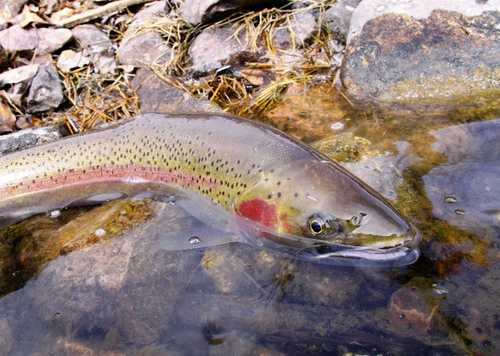forum
library
tutorial
contact

Feds' Latest Columbia River Plan:
Play Me an Old-fashioned Melody
by Daniel Jack Chasan
Crosscut, January 27, 2014
|
the film forum library tutorial contact |

|
Feds' Latest Columbia River Plan:
by Daniel Jack Chasan
|
Hopes and vague promises didn't fly with Bush administration courts, or even two years ago. But here we go again.
 Will the fifth time be the charm? Probably not.
Will the fifth time be the charm? Probably not.
The federal government has just come out with a new biological opinion (BiOp) on how to conduct the operations of its Columbia River system dams. The feds have been issuing Columbia River BiOps since Bill Clinton sat -- and did whatever else he did -- in the White House. And for all that time, the federal courts have been slapping them down.
The newest version was unveiled on January 17. It looks remarkably similar to the last one, which was prepared by the administration of George W. Bush and repackaged with little substantive change by Obama officials. United States District Judge James Redden rejected that Bush-Obama hybrid document in 2011.
If history provides a guide, this new BiOp will soon be the target of litigation by conservation groups and it, too, will eventually be tossed out by the courts. "Unfortunately," said Save Our Wild Salmon executive director Joseph Bogaard in a press release, "this latest blueprint is virtually indistinguishable from the plan rejected by the district court in 2011."
If, as they say, the definition of insanity is doing the same thing over again but expecting a different result, those people at the National Marine Fisheries Service (NMFS, aka NOAA Fisheries) must be a pretty wacky bunch. Or not. The feds have basically tried to preserve business as usual. Through two decades of court losses, they have largely managed to do so.
How did we get here? The background may be somewhat familiar, but worth recalling in what has become a court fight with a life cycle as predictable as that of the salmon. Here goes:
Like its predecessor, this BiOp relies heavily on habitat improvements rather than changes in dam operation; the court may or may not be convinced that these improvements will really happen -- or that they will produce the benefits that the federal agencies predict.
learn more on topics covered in the film
see the video
read the script
learn the songs
discussion forum
